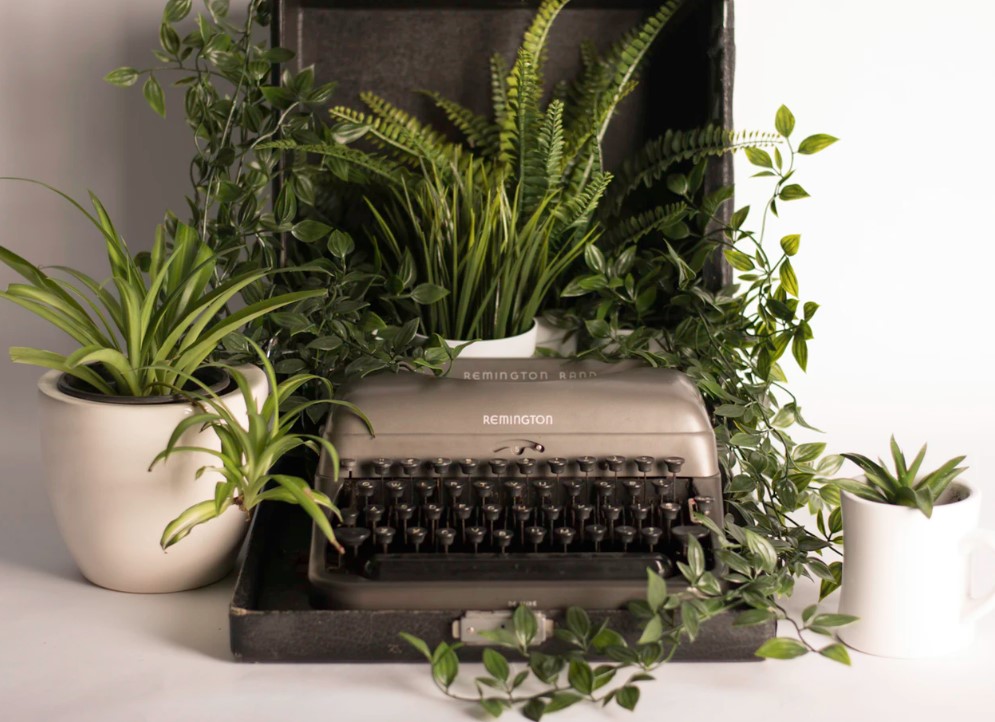Propagating plant from cuttings: a cheap, creative and fun way to decorate your house or office with plants. Besides this, you are busy with your hands, which makes it a nice hobby and good for your mental health. Plants make you happy! Even more when you grow them yourself. But what if you do not have green fingers? That does not matter, you can learn anything you want! In this blog I will give you some first tips and tricks to get started!
What are cuttings?
Creating a new plant from only one leaf or stem? It is possible! This is called making cuttings. This is a cheap and fun way to let your plant collection grow or organise a cuttings exchange to make new social contacts. Within the blink of an eye you see your own cuttings make roots and you can start taking care of them. You learn more by doing and by reading about it on the internet. In this way, you expand your plant collection and you always have some spare cuttings to share with your friends or bring to your office.
Why make plant cuttings?
By taking care of your plants, you take care of yourself! Various studies show that plants have a positive effect on your concentration, stress levels and creativity. When you take care of a plant, you have to wait to see what happens and if something new starts to grow. There is no direct reward. This is different than the fast world of our phones and the internet and thus can make us feel more at ease or rested. The feeling of taking care of a living thing, also teaches you to appreciate other things. Things you put energy in, give you reward. Besides the benefits for your mind, plants are also good for the air quality in your house. With growing cuttings you will do your environment and yourself a favor.
What do you need?
You need: a sharp knife to cut the stems, jars and small vases, soil (normal or especially for cuttings) and perlite to make the soil more airy. And most importantly you need plants to take cuttings from! You can find them in your house, at your parents, grandparents, at friends, at work or on Facebook.
Various ways to propagate your plants with cuttings
Every type of plant needs their own way of propagating. Here you can read more about each way and what the easiest plants in each category are:
- Plants that grow their own cutting: These are plants that grow their own mini plant, on the edge of a leaf, at the end of a straw, or from the roots. You can cut these from a plant with a knife and put them in a jar of water to root. When the roots of the cutting are grown (a couple of centimeters), you can put the cutting in soil. Examples of these types of plants are the “Chinese Money plant” (Pilea Peperomioides, in Dutch pancake plant) and the banana plant.
- Leaf cuttings
- From leafy plants: From a single leaf you can grow a full plant. Put a leaf in some fluffy soil and you will see roots growing from the base of the leaf. Keep the soil moist until the plant grows a bit. Behold, a new plant! Examples of this are the Leaf Begonia and the Peperomia.
- From fatty plants: Careful twist a leaf from the mother plant. Lay this (undamaged) leaf on some soil. This soil does not have to be moist all the time. From the point where the leaf was attached to the mother plant, roots will grow and a new plant appears. When you see roots, you can give some more water to stimulate growth.
- Stem cuttings
- With aerial roots: A stem cutting with aerial roots is usually a climber.
- Without aerial roots: A stem without aerial roots can create roots from out of nowhere. Put the stem deep in some water, because roots can form on every part of the stem. You can use a cutting with leafs (upper cutting), but also a part of the plant without leaves. Examples of this are the Geranium, Dracaena and the Tradescantia (inchplant)
- Divide roots: In some cases, you can propagate a multi stemmed houseplant, by dividing the roots. You can put each part of the plant in their own pot with new soil. Examples of this are the Peace Lily (Spathiphyllum), Sansevieria and Zamioculcas.
And then what?
I explained you how you can make a cutting, but it is also good to know how you can take care of your growing plant, also when this is grown into a full grown plant. Every plant needs their own type of care. Little or a lot of water and sunlight, a small or large plant pot, high or low humidity, plant food or not. You can find this information online.
Tip: if you don’t know what kind of plant you have, do a Google Image Search.
NiceDay actions
Try writing down your thoughts and feelings in the ‘Feeling Registration’ to get insight in what goes on in your mind and body.











